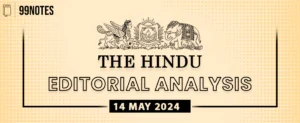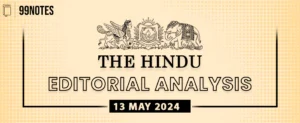Topic: GS2 – International Relations. Critical for UPSC due to its implications for international relations, conflict resolution, and understanding regional geopolitics in the Middle East. |
| Context |
| ● The article provides a comprehensive overview of the Israeli-Palestinian conflict, focusing on the challenges and perceptions surrounding the two-state solution. |
Current Status of Israel
- Israel, a Middle Eastern nation, has long been embroiled in conflicts over territory, particularly with the Palestinian population.
- Established in 1948, Israel’s sovereignty is recognized by many nations, but its borders remain a contentious issue, with disputes over territories like the West Bank and Gaza Strip.
Two-State Solution
- The two-state solution proposes the creation of two separate states, Israel and Palestine, living side by side in peace and security.
- This solution aims to address the aspirations of both Israelis and Palestinians for self-determination and sovereignty over their respective territories.
Recent Perceptions on the Two-State Solution
- Recent perceptions on the two-state solution vary widely among different stakeholders, both within Israel and internationally.
- Some view it as the most viable path to achieve lasting peace in the region, while others criticize it as impractical or insufficient to address underlying issues.
Support for the Two-State Solution
- Many international actors, including the United Nations and various countries, have endorsed the two-state solution as the preferred framework for resolving the Israeli-Palestinian conflict.
- They argue that it offers a just and equitable resolution by recognizing the rights and aspirations of both Israelis and Palestinians.
Challenges to the Two-State Solution
- Despite widespread support, the two-state solution faces numerous challenges that hinder its realisation.
- These challenges include territorial disputes, security concerns, the status of Jerusalem, Palestinian refugees’ rights, and the expansion of Israeli settlements in the occupied territories.
Israeli Perspectives
- Within Israel, opinions on the two-state solution vary across the political spectrum.
- Some Israeli leaders and citizens advocate for a negotiated settlement leading to the establishment of a Palestinian state alongside Israel, citing security and demographic concerns.
- However, others, particularly within conservative and nationalist circles, reject the two-state solution, preferring to maintain Israeli control over the entire territory.
Palestinian Perspectives
- Palestinians, too, hold diverse views on the two-state solution.
- While many support the establishment of an independent Palestinian state, they emphasise the need for sovereignty, territorial contiguity, and the right of return for Palestinian refugees.
- Some Palestinian factions, such as Hamas, reject the two-state solution altogether, advocating for the liberation of all Palestinian territories from Israeli occupation.
International Diplomatic Efforts
- Various international diplomatic efforts have been made to advance the two-state solution, including peace negotiations, multilateral initiatives, and diplomatic interventions.
- However, progress has been limited, with peace talks often stalling due to disagreements over key issues such as borders, security, and the status of Jerusalem.
Conclusion
- In conclusion, the two-state solution remains a central and contested issue in the Israeli-Palestinian conflict, with divergent perspectives and significant obstacles to its realisation.
- Achieving a sustainable peace settlement will require concerted efforts from all parties involved, along with international support and diplomacy, to address the complex and longstanding grievances on both sides.
PYQ: Q. The term “two-state solution” is sometimes mentioned in the news in the context of the affairs of: (a) China Ans: Option B (UPSC civil services prelims 2018) |
| Practice Question: Discuss the viability of the two-state solution for resolving the Israeli-Palestinian conflict, considering challenges and differing perspectives. (250 Words /15 marks) |











